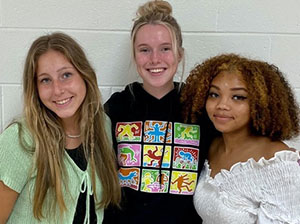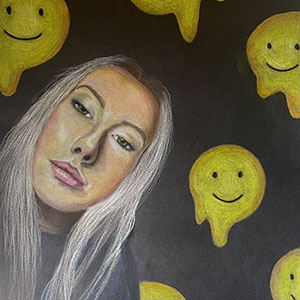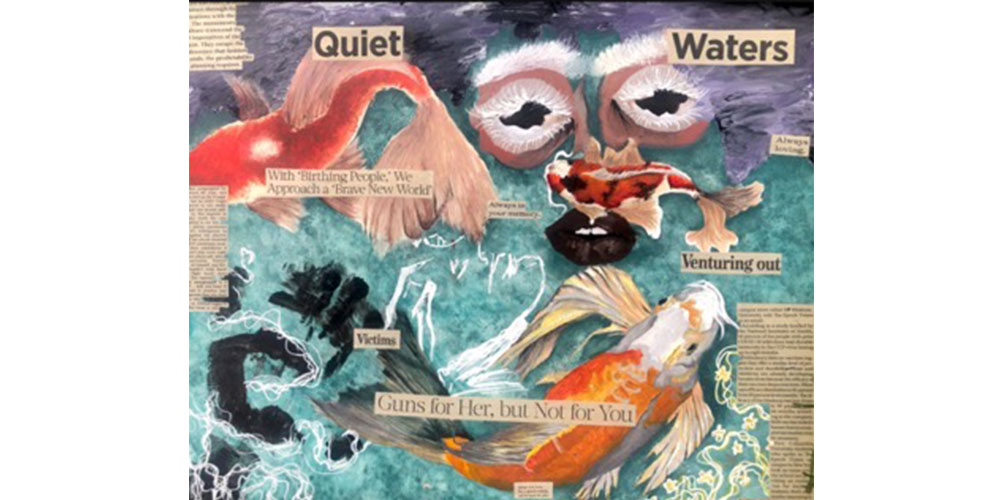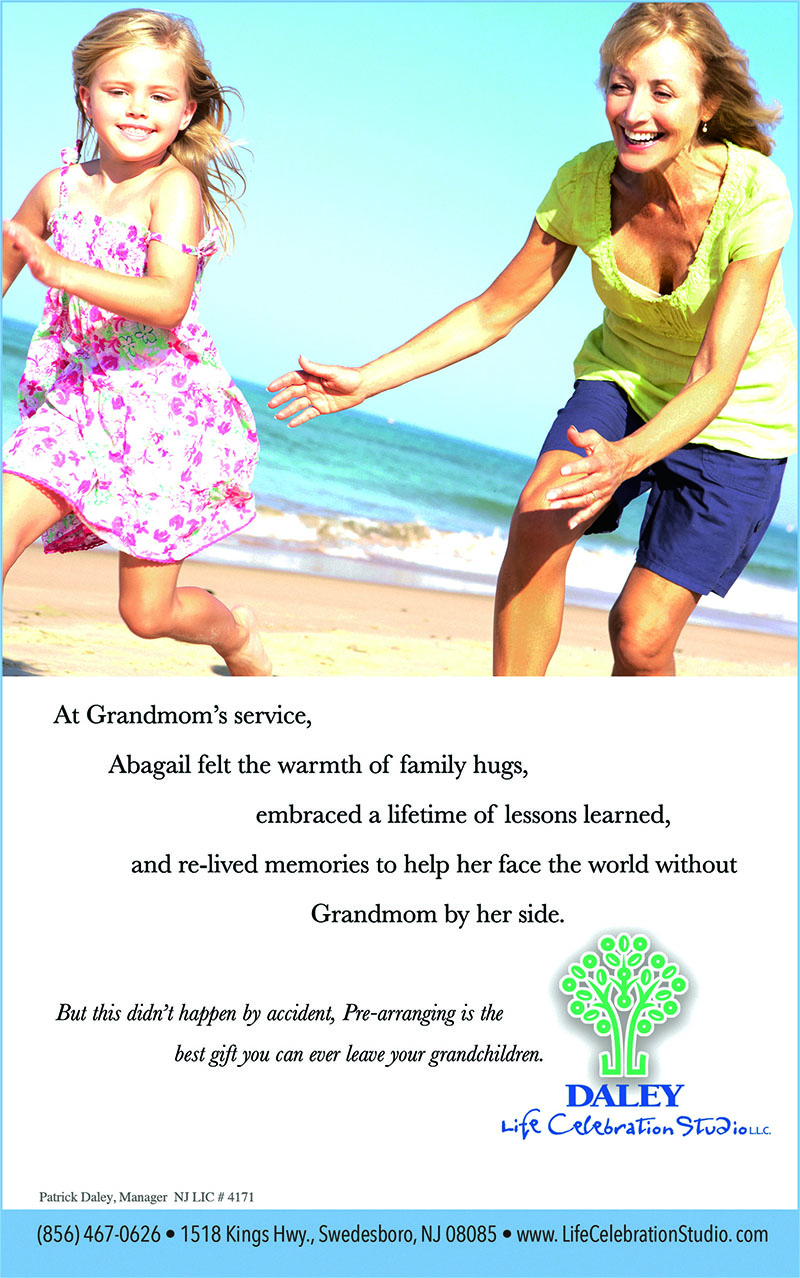It’s a sad fact that when school districts face budget cuts, art programs are often the first to be adversely affected.
Rather unusually, and fortunately for our community, Kingsway High School is an exception.
Christine Bjanes, the visual and performing arts chairperson who has been teaching at Kingsway for 26 years, explained.
“We are very lucky to have district support for the arts here at Kingsway. The high school just hired a sixth art teacher this year. Most schools do not have nearly as many art department members.”
Even with the appropriate staff, teachers in many districts do not have adequate supply budgets. Bjanes noted that Kingsway is also fortunate in this respect.
“Our supply budget is generous. We are never really in need. I know art funding cuts occur out there, but we haven’t really experienced it much first hand.”
While some may consider art education frivolous, nothing could be further from the truth in today’s society, which is increasingly dominated by visual communication and expression.
Ashley Blubaugh, who has been teaching art for 10 years and holds a BFA in fine arts-art education and an MED in art education, agreed.
“Our world today is very visual and students need to be equipped to know how to ‘communicate’ visually in the 21st century.”
Art instruction also helps students secure a well-rounded education that allows them to apply creative and critical thinking skills to other aspects of life.
Bjanes, a resident of Woolwich Township who holds a BFA in Illustration and an MST in art education, shared her assessment.
“Art is used to illustrate the human experience. With a subject matter as broad as life itself, art easily relates to aspects of almost everything else that is taught in school.”
“The arts enhance students’ resourcefulness by increasing creative thinking and problem-solving ability. An art education can lead to the development of a right-brained thinking process, which can be applied to not only problem solving in art, but also in other subject areas and beyond the classroom,” Bjanes continued.
“With art in the classroom alongside other academic subjects, schools provide multiple forms of literacy. Art introduces a visual form of thinking to students,” she concluded.
Denise Desiderio has been teaching at Kingsway for 19 years and holds a BFA in illustration with a teaching certification, and an MA in art and art education. She explained that the power of visual communication is something that many people take for granted.

“Art is a universal language. Design is all around us, and whether students decide to pursue a career in art and design or just take it as an elective for enjoyment, creating art makes better problem solvers.”
While many consider the creation of art the main aspect of art education, Desiderio also pointed out the other half of the equation.
“Students who make art can really develop skills that can be applied to other tasks at hand, while looking at art work fosters strong observational and analytical skills for interpretation.”
Bjanes echoed the importance of observing art. “[One of the purposes] of art education is to develop an awareness and appreciation for art in our societies, both past and present,” she said.
In addition to providing enough experienced teaching staff and supplies for its students, the Kingsway school district offers a robust program.
This year, students can choose from a variety of art electives including Art 1, Art 2, Cartooning, Photography, Applied Art, Ceramics, Digital Design & Illustration 1 and 2, Advanced Art 1 and 2, AP Studio Art, and AP Art History.
Each student is required to complete five credits in a visual or performing arts course. This includes any visual art class (or music or drama). With 30 course offerings this year, art teachers see a large population of the students at Kingsway.
Self-expression is also an important component of art education at Kingsway.
Kristin Pepe is a resident of South Harrison Township who has been teaching at Kingsway for 11 years. She holds a BFA in fine arts and an MFA in painting.

“I hope our art classrooms provide our students with a safe place for self-expression and where students can feel at home,” Pepe said.
Bjanes said that students learn to “take risks” by being creative, providing them with a sense of personal growth and independence. They in turn develop their own reactions and articulate them through the act of creating art, which requires critical thinking, analysis, and judgment.
“Students learn to develop and define their own sets of values and standards. Motivation is greater when the task has personal merit,” she added.
Kingsway boasts an average of 40 students per year in the National Art Honor Society (NAHS), another testament to the success of the school’s program.
The society, which was established in 1978 for high school students, requires art-based community service projects as well maintaining an A average in all art courses.
“The goal of the National Art Honor Society is to allow students to use their talents in art to create a more beautiful world for their school and their community,” said Bjanes.
Jessica Lyons, a senior from Woolwich, is president of the NAHS at Kingsway, and explains that art is important because it’s the way we express ourselves and communicate.

“Although many claim that the arts are not for them, each and every one of us has seen a work of art and was able to express some sort of emotion towards it. We tell stories through art, bring issues to light through art, and simply try to make people smile through art.”
Kaelyn Charnitsky, a senior from Mullica Hill and vice president of the NAHS, encourages all students to consider the art options at Kingsway.
“Some students dislike art because they are not gifted at drawing or painting, but there are classes such as Digital Design, Photography, Ceramics, and Applied Art that may suit them better.”
While the visual arts are currently thriving at Kingsway High School, continued encouragement and support from the community are vital.
Nick Fiocco holds a BA in art education and has been teaching at Kingsway for nine years. A resident of Clarksboro, he encourages the supportive process to begin early to help set students up for success.
“The community can support the high school arts by helping foster creativity and passion for art at a younger age and encouraging students to pursue artist avenues as they grow older,” he explained.
Lyons added that the community-at-large can do much more to support the arts so children can have a chance to experience a new perspective on life through the art world.

“Definitely more funding [is needed] in schools that have gotten rid of their art programs or can’t afford art supplies,” Lyons said.
Charnitsky had some additional thoughts.
“The community could benefit the arts and art education by creating spaces for artists to work freely or gathering supplies for children who may not have access to them to inspire future generations of artists.”
Woolwich resident Charlize Bjanes is a senior and the NAHS secretary at Kingsway. She pointed out that art necessitates a high level of inventiveness and is vital for the development of new expressions and ideas.
“Art, like language, is a natural way for people to express themselves. There are several kinds of language. You may be unable to communicate in a specific language without practice. Art, on the other hand, is a universal method of communication.”
“Anyone can understand it, but not everyone can produce it if it is overlooked,” she concluded.
By Colleen Woods-Esposito











